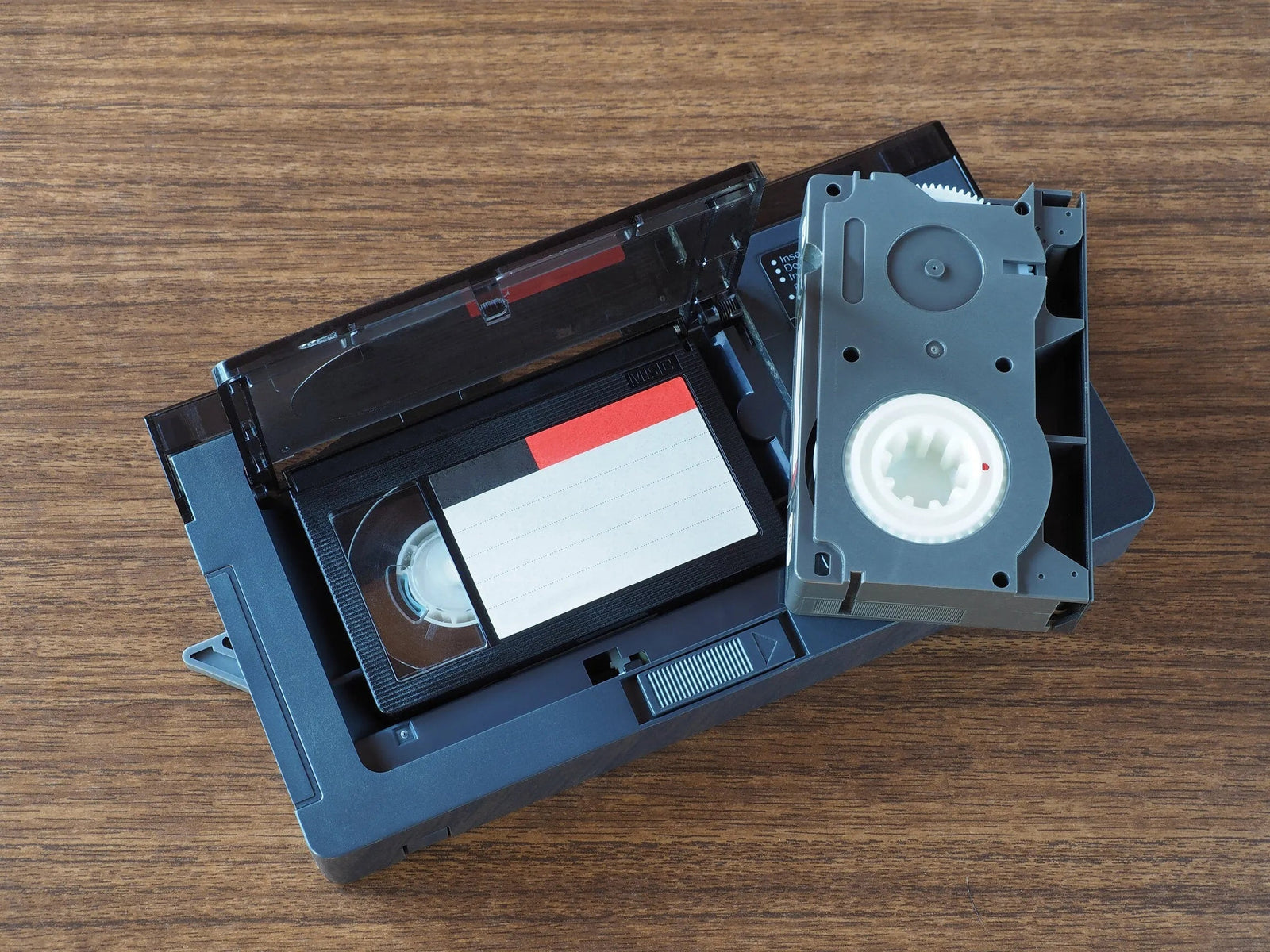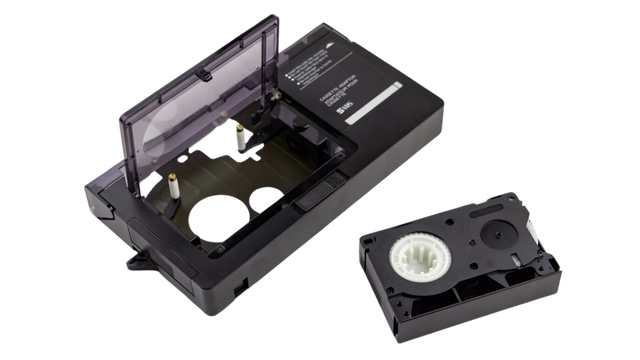In the era of digital technology, analog video formats like VHS and VHS-C may seem like relics of the past. However, these formats played a critical role in the history of video technology. VHS was the leading video format from the late 1970s to the early 2000s. It was a standard for home video recording and playback, offering consumers an affordable way to watch movies at home or record their own videos.
Conversely, VHS-C, or VHS Compact, was a smaller and more portable version of the VHS tape. Introduced in the mid-1980s, VHS-C tapes were used primarily in compact camcorders. The smaller size allowed for more portable video recording but at the expense of playback compatibility with standard VHS players. This is where the VHSC to VHS adapter comes into play.
The VHS-C to VHS adapter is a device that permits the playback of VHS-C tapes on standard VHS players. This ingenious invention provided a solution to the incompatibility issue between the two formats, allowing users to record with the portability of VHS-C and then enjoy them on their home VHS players.
The Need for a VHS-C to VHS Adapter
The primary reason for the necessity of a VHSC to VHS adapter lies in the physical differences between the two tape formats. The VHS-C tape is significantly smaller than a standard VHS tape. This size difference prevents the VHS-C tape from fitting into and being played back by a VHS player directly.
The VHS-C to VHS adapter solves this issue by housing the smaller VHS-C tape within a casing that is the same size as a standard VHS tape. This allows the VHS-C tape to be played back in a standard VHS player, providing a simple and effective solution to the incompatibility issue between the two formats.
Furthermore, the VHS-C to VHS adapter also preserves the quality of the VHS-C tapes. Without the adapter, the only way to watch VHSC tapes would be on a small screen of a camcorder, which doesn't provide the best viewing experience. The VHS-C to VHS adapter allows the tapes to be played on a larger screen, enhancing the overall viewing experience.

How Does a VHS-C to VHS Adapter Work?
The functionality of a VHS-C to VHS adapter is a marvel of simplicity and engineering. The adapter is essentially a VHS-sized shell that houses a VHSC tape. The adapter opens up, allowing you to insert a VHS-C tape. Once the tape is inside, the adapter closes, and it can then be inserted into a standard VHS player.
The magic of the VHS-C to VHS adapter lies in its internal mechanism. Once within the VHS player, the player's standard play head comes into contact with the VHS-C tape inside the adapter. This contact allows the VHS player to read the information on the VHS-C tape, converting it into a signal that can be viewed on a television screen.
It's important to note that the VHS-C to VHS adapter does not convert the VHS-C tape into a VHS tape. Rather, it merely allows the VHS player to read the VHSC tape. This distinction is essential to understand as it means the quality of the VHS-C tape remains unchanged when played back through the adapter.
Benefits of Using a VHS-C to VHS Adapter
There are several benefits of using a VHS-C to VHS adapter. Firstly, the adapter enables the playback of VHS-C tapes on larger screens, enhancing the viewing experience. Additionally, it provides a way to preserve and watch old VHS-C recordings that would otherwise be unviewable due to the lack of compatible playback devices.
Moreover, the VHS-C to VHS adapter also makes it possible to transfer VHSC recordings to other formats. By using the adapter to play the VHS-C tapes on a VHS player, the content can be captured and digitized using a DVD recorder or a computer with a video capture card. This allows the preservation of the content in a more modern, durable format.
Finally, using a VHS-C to VHS adapter is cost-effective. Instead of investing in a specialized VHSC player, which can be hard to find and expensive, one can use the adapter with a standard VHS player. This makes it a practical and economical choice for those wishing to view or transfer their VHS-C tapes.
Step-by-Step Guide to Using a VHS-C Adapter
Using a VHS-C to VHS adapter is a straightforward process. Here is a step-by-step guide:
- Insert the VHS-C Tape into the Adapter “ Open the adapter and place the VHS-C tape inside. Ensure that the tape is correctly aligned with the adapter's guide posts and the tape's exposed side is facing down.
- Close the Adapter “ Once the VHS-C tape is inside, close the adapter. It should click into place, indicating that the tape is properly secured.
- Insert the Adapter into the VHS Player “ With the VHS-C tape inside, insert the adapter into the VHS player as you would a normal VHS tape.
- Play the Tape “ Turn on the VHS player and press play. The VHS-C tape should start playing, and the video will be displayed on your TV screen.
Remember, the adapter does not convert the VHS-C tape into a VHS tape. It merely facilitates the VHS player to read the VHSC tape.
Troubleshooting a VHS-C to VHS Adapter
Like any piece of technology, a VHS-C to VHS adapter can encounter problems. Here are a few common issues and their solutions:
- The Adapter Doesn't Fit into the VHS Player “ Ensure that you have inserted the adapter correctly. It should fit into the player just like a regular VHS tape.
- The VHSC Tape Doesn't Play “ Check that the VHS-C tape is properly inserted into the adapter and that the adapter is fully closed. Also, ensure that your VHS player is functioning correctly.
- The Video Quality is Poor “ Remember, the adapter does not improve the quality of the VHS-C tape. If the tape is old or damaged, the video quality will be compromised.
- The VHSC Tape Gets Stuck in the Adapter “ Do not force the tape out. Instead, gently open the adapter and carefully remove the tape. Consult professionals if you need VHS tape repair.
If you continue to encounter problems, consult the adapter's user manual or contact the manufacturer's customer support.
Caring for Your VHS-C Tape Adapter
Proper care and maintenance of your VHS-C to VHS adapter can ensure its longevity and optimal performance. Here are a few tips:
- Store the Adapter Properly “ Keep the adapter in a cool, dry place away from direct sunlight and dust. Extreme temperatures and humidity can damage the adapter's internal mechanism.
- Clean the Adapter Regularly “ Use a dry, soft cloth to clean the adapter's exterior. For the interior, use a VHS cleaning tape to remove any dust or debris.
- Handle the Adapter with Care “ Avoid dropping the adapter or placing heavy objects on it to prevent damage.
- Check the VHS-C Tapes Before Use “ Ensure that the VHS-C tapes are in good condition before inserting them into the adapter. Damaged tapes can harm the adapter's internal mechanism.
Enjoy Your VHS-C Cassette Tapes
The VHS-C to VHS adapter is a simple yet effective device that bridges the gap between two significant video formats. It allows the playback of VHS-C tapes on standard VHS players, preserving the content of these tapes and enhancing the viewing experience.
Whether you're a video technology enthusiast, a film collector, or someone who has a collection of old VHS-C tapes, understanding the functionality of a VHS-C to VHS adapter can be immensely beneficial. This knowledge not only enables you to appreciate the ingenuity of this device but also empowers you to make the most of your VHS-C and VHS collections.
Remember, proper use, care, and maintenance of your VHS-C to VHS adapter can ensure its functionality and longevity. By taking these precautions, you can enjoy the benefits of this adapter for years to come.
VHS-C Tape Conversion
VHS-C tape conversion to digital format is essential to preserve the precious memories stored on them. Over time, all video tapes will degrade, leading to a loss of video quality or, worse, making the footage completely unrecoverable. To prevent this, it is highly recommended to convert all VHS to digital before your bad tapes can no longer be played.

VHS to Digital
Whether you have VHS-C tapes, or the standard VHS cassette tapes, it's time to convert VHS to digital. Digital formats are more durable, easily accessible, and compatible with modern devices. By transferring VHS to digital, you ensure that your cherished moments are safe and can be enjoyed for generations to come.

FAQ: People Also Ask
What is a VHS-C to VHS adapter?
A VHS-C to VHS adapter is a special cassette shell that lets you play compact VHS-C tapes inside a standard VCR. It works by aligning the smaller tape with the full-size VHS mechanism.
Do I need batteries for a VHS-C adapter?
Yes, most VHS-C adapters require one AA battery to open, close, and align the tape properly. Without power, the tape won’t load correctly into a VCR.
Can a VHS-C tape be played without an adapter?
Without an adapter, VHS-C tapes cannot be inserted directly into a VCR. The only alternative is to play them back using the original camcorder and transfer the footage digitally.
Will a VHS-C adapter work with all VCRs?
VHS-C adapters are designed for standard VHS players. They generally work with most VCRs, but compatibility issues can arise if the VCR is damaged or outdated.
What’s the best way to preserve VHS-C tapes today?
Since VHS players and adapters are aging and prone to failure, the best solution is to digitize VHS-C tapes. Professional services can transfer the footage to MP4 files, DVDs, or cloud storage for long-term preservation.
Recommended Next Reads
VHS-C: How to Watch, Repair, and Digitize These Mini Tapes
Your Wedding Video Is Worth Watching Again
VHS Mold: How to Handle Moldy VHS Tapes Without Ruining Them
How to Transfer VHS to Digital: Keep Your Family Memories Safe
What Is Nostalgia? The Science and Magic Behind Nostalgic Memories
📬 Want more tips like this?
Subscribe to Heirloom emails to learn how to preserve your priceless memories.
Get discount codes for expedited shipping, quality digitizing, and secure cloud storage.
We never spam, and it’s easy to unsubscribe at any time.

